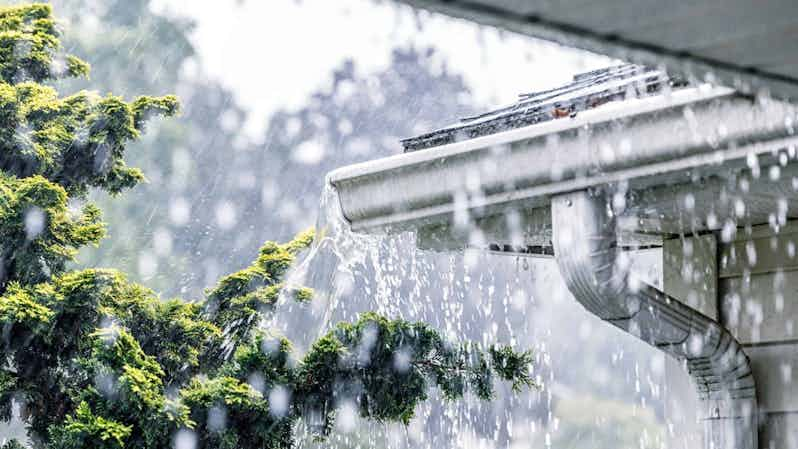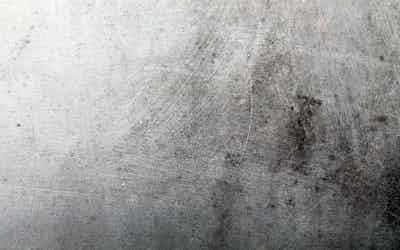How to Waterproof the Outside of Your Home

You might never have even stopped to think about why your home stays dry, even during heavy rain. Well, the answer lies in waterproofing—a crucial step in home construction that protects your home from moisture damage.
Waterproofing is the process of sealing off your home to protect the structure from moisture damage right from the start. Builders incorporate this step in key areas such as foundations, exterior walls, and roofs.
Over time your waterproofing effectiveness can start to wane. From small cracks to peeling paint, there are certain warning signs to look out for that may indicate your home needs maintenance to avoid serious damage.
Assessing Your Home for Waterproofing Needs
The first step to waterproofing solutions is checking where water might be sneaking into your home. This is where you will need to do a thorough inspection of your home, playing leak detective and looking for any evidence of water intrusion.
Some of the most common trouble spots include cracks in the foundation, exterior walls, window sills, gutters or downspouts.
Exterior Wall Waterproofing Methods
Once you’ve located potential leaks, the next step is to seal and protect your exterior walls. Waterproof paints and sealants provide a protective coating against moisture and are known as membranes.
The main two types are liquid membranes applied by brushing, rolling, or spraying onto surfaces and sheet membranes, which are watertight, physical materials applied over surfaces to form a durable barrier. A professional waterproofer can advise which type of waterproofing is most suited to your project needs.
Cracks in Bricks and Concrete
If you’ve spotted cracks in exposed brick or concrete, you’ll need to seal them with a quality filler or masonry sealant. These can be purchased from your local hardware store. Taking these steps will keep your home dry and structurally sound, even in harsh weather conditions.
Foundation Waterproofing Techniques
For waterproofing home foundations, there are two main approaches:
- Exterior foundation coatings
- Interior waterproofing
A key component of effective foundation waterproofing is installing a membrane. These membranes, typically made from materials like PVC or EPDM, form an additional protective layer that prevents moisture from seeping into the structure.
Exterior Foundation Coatings
Exterior coatings of either elastomeric coatings or cement-based coatings are applied to the outside of the foundation. This creates a barrier that prevents water from reaching the structure. While this is the most effective method, is best done during construction or a major renovation.
Additionally, membranes are most commonly used on the exterior of foundations, acting as a barrier between the foundation wall and the surrounding soil.
Interior Waterproofing
When exterior options aren’t feasible, interior waterproofing is typically used. It involves applying waterproof materials inside the foundation to stop water that has already entered, though it doesn’t prevent the water from getting in initially.
Membranes can also be used on the interior to help block water that has already infiltrated the foundation, preventing it from further entering the living areas.
Importance of Proper Drainage
Whether waterproofing the exterior and/or the interior, a proper drainage system is essential to direct water away from the foundation and prevent pooling water around it in the first place. Your best defence is combining all three—waterproofing membranes and an effective drainage system provide the most solid protection for your foundations.
Roof & Gutter Protection
One way to prevent any water from creating any leaks and entering your home is by regularly maintaining your gutters and downspouts. When these get full of leaves and debris, it creates water build-up, and the water must go somewhere. Regular cleaning of your gutters and downpipes ensures you’re directing water away from the foundation to avoid pooling.
You can also use roof flashing—a thin, weatherproof material used to direct water away from joints, seams, and other vulnerable areas on the roof, such as a chimney, to prevent leaks.
When purchasing or building a new home, consider proper roof slope and drainage systems to prevent water pooling. You can even hire a qualified plumber to inspect the home’s sealing and drainage before deciding. If building, having a waterstop installed will further protect your foundation.
DIY vs. Professional Waterproofing
While DIY waterproofing can save money, it’s often best to call a professional to make your home 100% watertight. Experts ensure proper installation, coating and patch holes for long-lasting results. It also provides priceless peace of mind that your home is watertight.
While DIY may seem like a cheaper option upfront, the reality is it can lead to costly repairs if done incorrectly. This happens more often than you would believe.
Common mistakes include:
- Improper surface preparation
- Inadequate sealing
- Missing drainage solutions
- Incorrect installation of membranes
Hiring a professional ensures effective waterproofing and peace of mind, especially for critical areas like basement waterproofing or foundation exterior waterproofing. They can also advise on the best waterproofing products.
Long-Term Maintenance & Prevention
That old cliche, prevention is the best measure, rings true. One of the best things you can do is keep up regular inspections and upkeep to maintain waterproofing effectiveness. The best time for this is particularly after heavy rain or storms. It can help you identify early signs of water damage or wear.
The end of autumn is a good time to tackle those gutters. Keeping gutters clear and inspecting roof flashing will help ensure your waterproofing remains effective for years.
You may also consider investing in the best waterproofing supplies for long-lasting waterproofing, which include high-quality membranes, sealants, and coatings. Just ask your Illawarra waterproofing experts about this.
Find Your Waterproofing Solution Today
Effective waterproofing involves regular maintenance, using quality materials, and addressing potential issues early. While both DIY and professional approaches have their benefits, if you want peace of mind that your home is watertight, a waterproofing expert ensures long-lasting results. If that sounds like you, contact Illawarra Industrial Supplies for expert waterproofing services or advice tailored to your needs.
Frequently Asked Questions
How to waterproof the exterior of a house?
To waterproof the exterior of a house, apply a waterproofing membrane or waterproofing materials such as exterior sealant such as elastomeric coatings or cement-based coatings to the walls and foundation to block water infiltration.
What is the best waterproofing for outside?
High-quality membranes, such as PVC or EPDM, are considered the best waterproofing materials for external walls and foundations.
What is the cheapest way to waterproof walls?
Using a liquid-applied waterproofing membrane or a paint-on sealant as a DIY project is often the most affordable option for waterproofing walls.
What is the cheapest method of waterproofing?
The cheapest method of waterproofing is a DIY approach that involves applying waterproofing paint or sealant to vulnerable areas like foundations or walls. Enlisting the skills of a professional will help you ensure your desired results are achieved.
- Date
- 1.4.2025


